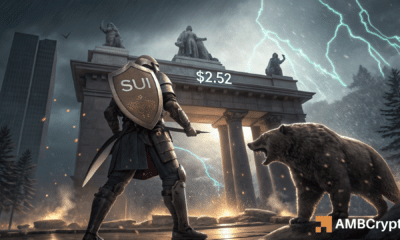SHIB prices are down: Should you buy the dip?

- Shiba Inu faced a large retracement over the past week.
- The market structure was bullish and analysis showed bulls still have a good chance of driving a recovery.
Shiba Inu [SHIB] noted losses as the crypto market faced a wave of selling pressure following a Bitcoin [BTC] sentiment shift. This shift could be a short-term one, but that hinges on whether BTC bulls ensure prices don’t fall below $40.2k.
The Canadian crypto exchange Uphold delisted SHIB and Dogecoin [DOGE] among others. The reason cited was regulatory compliance. A recent AMBCrypto analysis highlighted the region SHIB was trading at press time as a buy zone- has anything changed since then?
The 50% Fibonacci retracement level has held out
The recent selling pressure came after the spot ETF approval on 11th January. Alongside the rest of the market, SHIB prices slid sharply. However, Shiba Inu has a bullish market structure on the one-day chart.
The H12 bullish order block (cyan) at $0.0000093 has confluence with the 50% retracement level. Thus far, the bulls have managed to keep prices above $0.00000893.
A one-day trading session close below this level would shift the demand zone to supply.
Conversely the RSI dropped below neutral 50 to signal a bearish shift in momentum. The OBV also saw a dip in the past week but still remained above December highs.
The contradictory signals from the momentum and price action are not a concern. The price action takes precedence every time, meaning the structure was more important here.
Social volume saw an uptick in January

Source: Santiment
The MVRV ratio has steadily trended downward since mid-December. It fell below zero on 18th January but pushed back above it at press time to stand at 0.194%. This showed that selling pressure from profit-takers was at an end, at least in the short-term.
Is your portfolio green? Check the SHIB Profit Calculator
The mean coin age has trended upward during this time. This showed strong holders and network-wide accumulation of SHIB.
The social volume has also increased in January. Together, they pointed toward a bullish bias.
Disclaimer: The information presented does not constitute financial, investment, trading, or other types of advice and is solely the writer’s opinion.







